Mathematical Modeling and Experimental Validation of Ultrafast Nonlinear Light-Matter Coupling associated with Filamentation in Transparent Media
A Coherent Short Pulse X-Ray Source
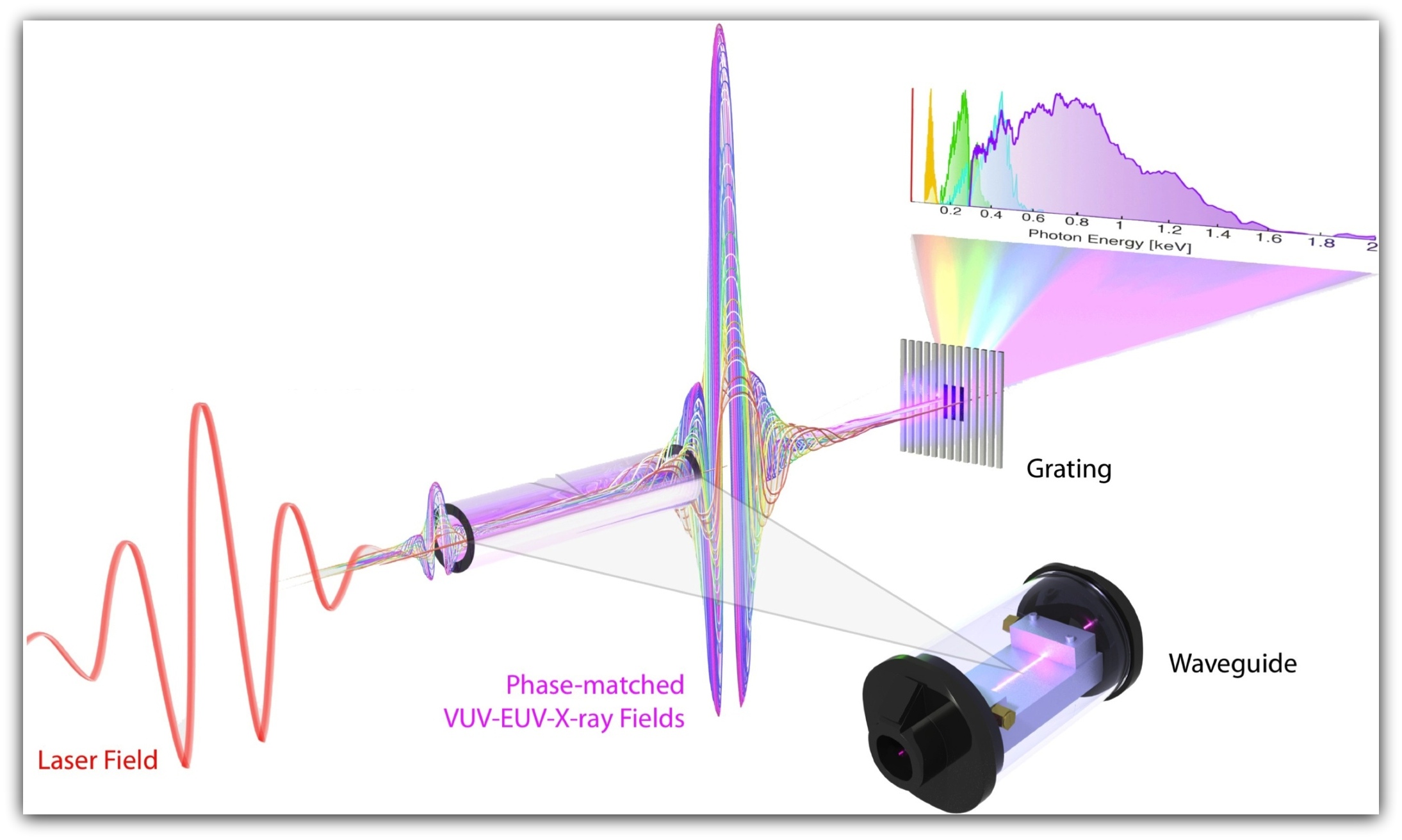
Team members from
JILA in collaboration with a team at the University of Vienna have
generated bright high-harmonic x-ray supercontinuam
with photon energies spanning the EUV to 1.6 keV (<7.7 Å) by focusing 3.9-mm wavelength pulses from a tabletop femtosecond laser into a waveguide filled with He gas. This represents an extreme >5000-order
nonlinear process while also demonstrating fully phase-matched frequency upconversion. They discovered that the
multi-atmosphere pressures necessary for efficient x-ray generation also
supports laser beam filamentation, enhancing
the x-ray yield by another order of magnitude. They observe coherent,
laser-like x-ray beams, despite the fact that ultrahigh harmonic
generation occurs in a regime where the laser-driven electrons encounter
many neighboring atoms before they re-encounter their parent ions.
Preliminary calculations indicate that the kilo-electron volt-bandwidth
coherent supercontinuum has a well-behaved
chirp that, when compensated, could support a single-x-ray-cycle
2.5-attosecond pulse duration.
From Single Particle Photoionization to an Isotropic Plasma State
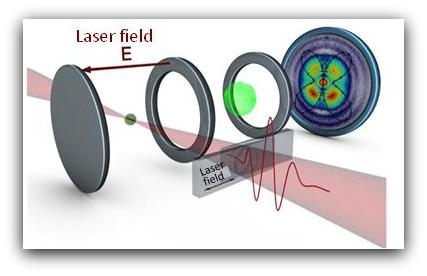
Recent breakthroughs in velocity imaging techniques make it possible to capture
very intense field photo-ionized electron/ion angular distributions with
femtosecond resolution. The resultant angular momentum distributions
display a sensitive dependence on the exciting optical carrier
frequency/wavelength and carrier-envelope phase.
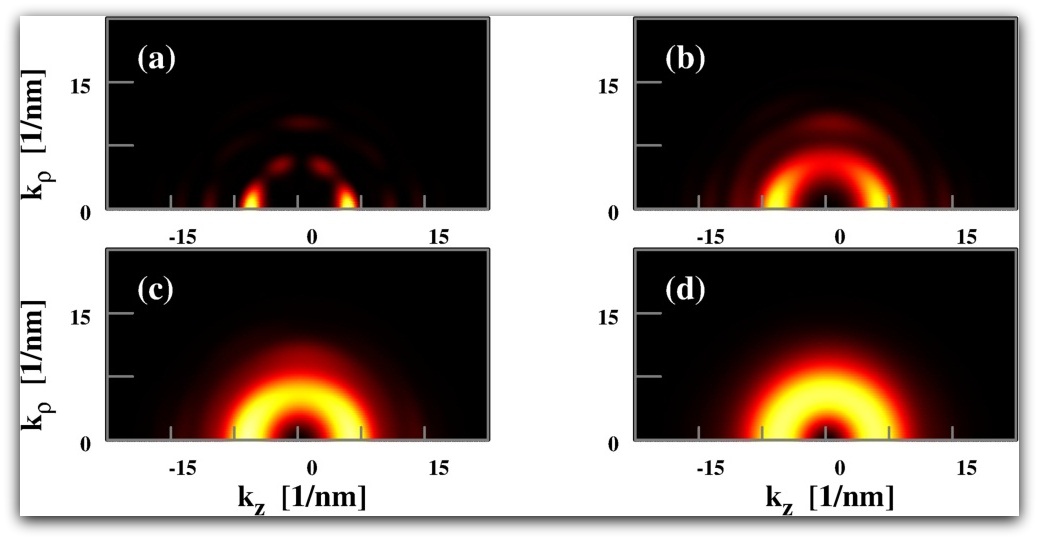
The team has developed a hierarchy of full 3D quantum simulation models
of localized intense few cycle pulse photo-ionization of atoms/molecules
with the goal of quantitatively verifying these experimental observations
and also of providing first principles light-matter coupling sources for
propagation studies. These single particle
angularly (momentum) resolved anisotropic photo-ionized electron
distributions have been used as initial data for the first full 3D
quantum Boltzmann study of the evolution of nonequilibrium
electron/ion distributions towards a quasi-equilibrium isotropic plasma
state. The complexity of this 3D many-body problem made it necessary to
decouple the initial photo-ionized electron/ion distribution creation
from the Coulomb mediated electron/electron and electron/ion scattering
problem.
Remote
Delivery of Conical Wave Beams
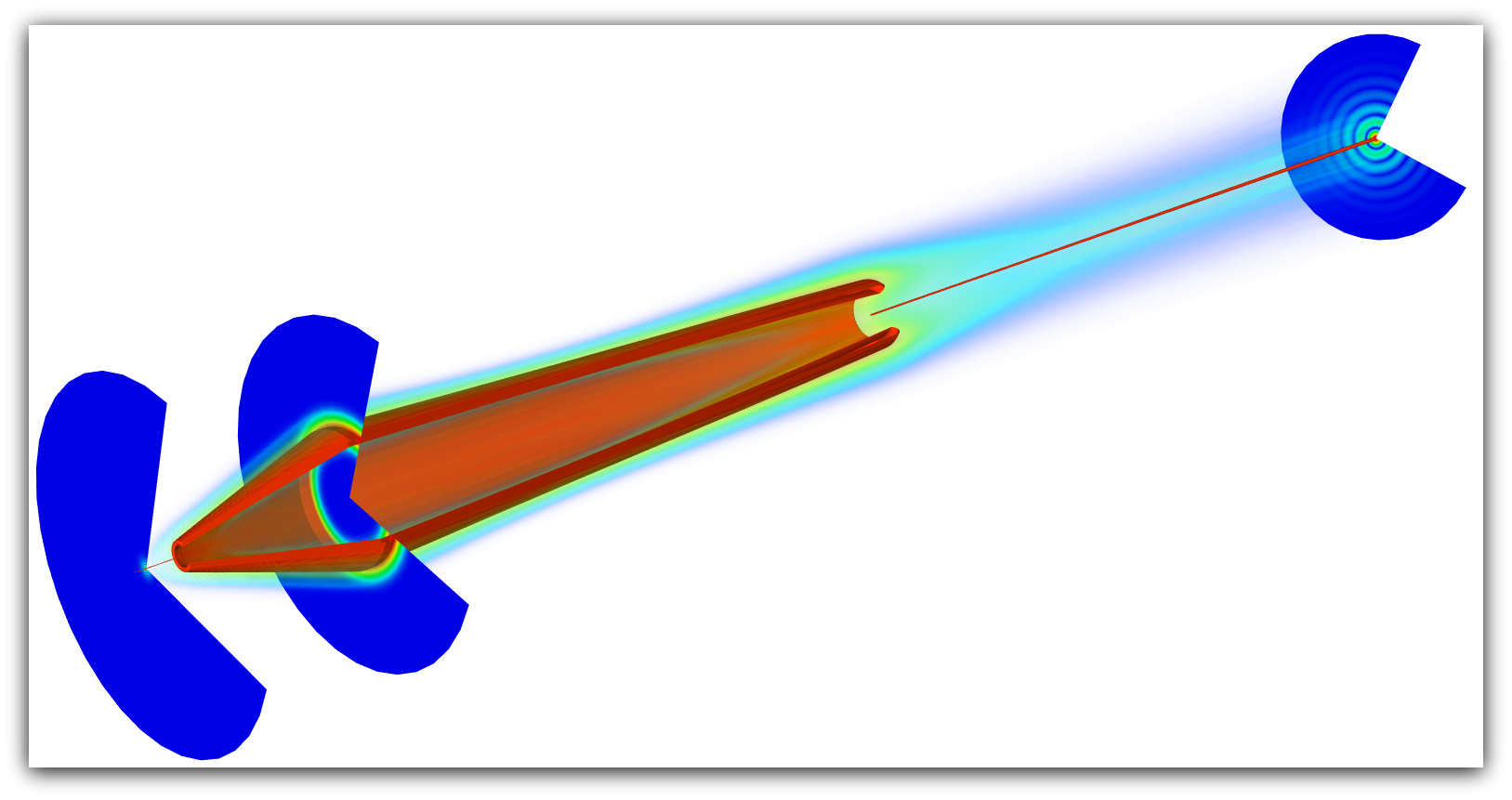
Another important accomplishment of the project has been the initial theoretical
demonstration that apodized Bessel, Vortex or
other beams can be reconstructed remotely at km range by using an
optimization algorithm based on an extension of the Gerchberg-Saxton
Fourier integral relation. The essence of this algorithm is to assume a
magnified far-field ring-like amplitude profile near the launch point and
run an iterative mapping where the phase profile is allowed to vary such
as to yield the desired solution at target. Initial results indicate that
one can stipulate an on-axis uniform extended intensity profile at the
target and obtain a convergent solution at km range. For example, it has
been explicitly shown that a Bessel beam at source can be imaged at 1km
to give a near uniform on-axis intensity extending over 200m. Extension
of this theory study to include an extended ground level turbulent path
and explore possible adaptive optics solutions is underway.
AFRL Transitions

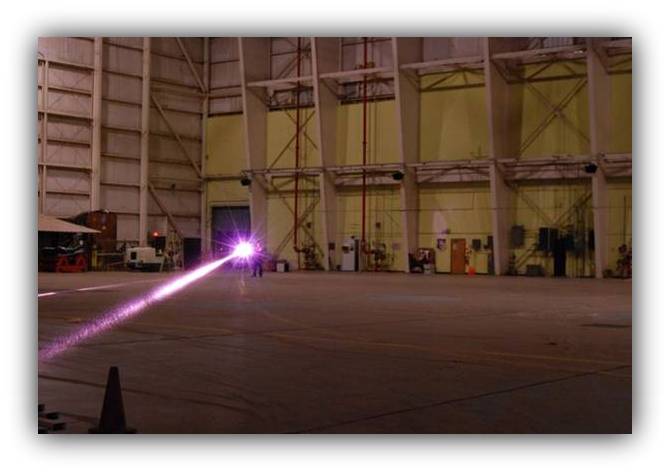
At Kirtland AFB, the MURI team is designing and testing custom hardware for
generating TW-class pulses with robust transverse profiles. A fused
silica phase mask to generate vortex transverse profiles has been
delivered to AFRL for field testing at multi-km range. The MURI effort
will subsequently transition the results of developed remote delivery
methodologies following turbulence mitigation studies demonstrated at
laboratory scale. Working with AFRL at Kirtland, the MURI team will
explore pre-chirp to extend plasma propagation distances. Personnel at
AFRL/Kirtland are interested in coupling radiofrequency and microwave
signals to plasma channels to provide low probability of intercept
communication capability and remote surface interrogation capabilities.
Additionally, the plasma filament is a conductive path, and as such can
assist in the highly local delivery of electromagnetic energy for the
purpose of interacting with a target either for benign communication or
destructive illumination.
2012 - JILA, University of Colorado: Sizzling Vibrations
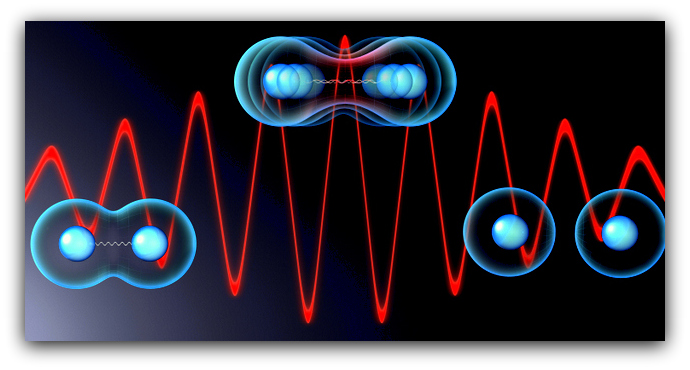
Former research associate Antonio Picon, research
associate Agnieszka Jaron-Becker, and Fellow Andreas Becker have
discovered a way to make the hydrogen molecular ion (H2+) fall apart into
its constituent atoms without exciting or ionizing the electron.

November 2012: JILA, University of Colorado
JILA University of Colorado student, Carlos Hernandez-Garcia,
awarded "OSA Best Student Paper Award"; for MURI referenced
paper "Temporal structure of ultra high-order
harmonic generation in the keV regime driven by
mid-infrared lasers". For more information please see page 4 of
http://www.osa-opn.org/opn/media/Images/PDF/2012/1112/48-52-Backscatter-Nov.pdf?ext=.pdf
October 7 - 12, 2012: COFIL
The 4-th International
Symposium on Filamentation(COFIL 2012), hosted
in Tucson from Oct 7-12, 2012 was partially supported through the MURI
program and was chaired by the PI of the MURI. This symposium, held
biannually since 2006, was the first to be held in the U.S. and brought
together world experts on filamentation science
from North America, Europe, and Asia. Prior meetings were held in Quebec,
Canada (2006), Paris, France (2008) and Crete, Greece (2010). The MURI
was well represented through a plenary talk, 10 invited talks and 8
poster presentations.
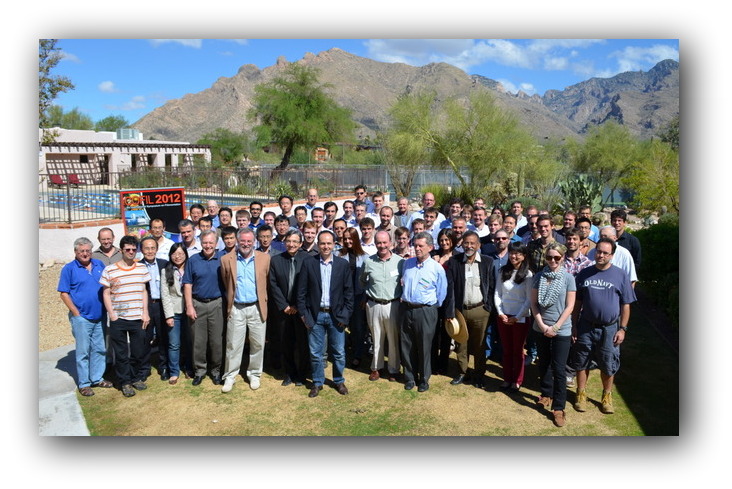

|